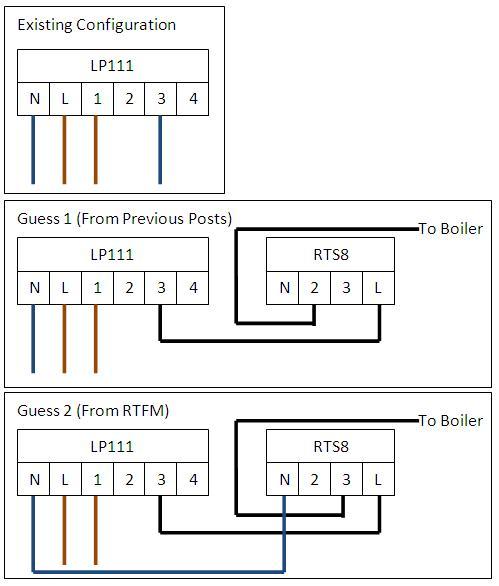Hats off to Matt - you are absolutely right about the CDi. Phew, thankfully the OP went for the three-wire option anyway

(I guess the CDi boilers have a greater resistance in their switching circuit so a 2-wire connection of this 'stat wouldn't have enough current going through it to operate the 'series' accelerator resistor. The 'stat he's used has 2 accelerator resistors inside - one for 2 and one for 3-wire connection. But the 2-wire setup does seem a compromise at the best of times.)
Ace, if these electro-mechanical room 'stats aren't wired up correctly - so that the accelerator resistor isn't heating up as it should - then the symptom is that it'll be very 'sluggish' in performance. Ie: when it turns the heating on, there will be a bigger temp change before it 'clicks' and turns the heating off again. Expect a 2-3 degree temp change between switchings, which will be noticeable and probably uncomfortable. When wired correctly, they should actually be ok. The reason they need the accel resistor (heater) inside them is because the bi-metallic strip - which bends with heat to operate a switch - is a very crude device and doesn't bend much with tiny changes in temp. So, when it 'clicks' to call for heat a little resistor-heater comes on beside it to help warm it up and 'click' off much sooner!
Not having moving parts means that electronic room 'stats can be as sensitive as you want - in theory. Funnily enough, if it was TOO sensitive - keeping the room temp within a half-degree, for example - the boiler would be switched on and off continually which would soon wear it out. So, with these 'stats they have to do the opposite of the electro-mech ones; they have to built in artificial sluggishness!
The general consensus is, I believe, that the digital ones are superior, tho'. They are certainly more flexible and can have useful features such as 'temp hold' - keeping your temp high for an extra hour before going back down, etc -
And, the best of the bunch is the "Programmable 'Stat". These are no bigger than your current room 'stat and will fit directly in its place. It will take over both your programmer's TIMINGS
and the 'stat's TEMPS.
For example (god, how many times have I explained this on
Screwfix...

), you could program it to turn on the heating to 20oC at 7am, go back down to 16oC at 8.30am, back up to 20oC at 5pm, down to 15oC at 10pm for overnight use, back up to... All done automatically. AND it'll work out how early your heating has to come on each time to get the house to temp at the time you want. And it can be set to 'holiday' to keep your house from freezing when you're away. AND it can be over-ridden or delayed or whatever as you wish...
Cool? Yep. I just bought a brand new Heatmiser PRT (version 3) on eBay for £32 delivered. You can get them for around £40-odd on Amazon and other places. Once you've gone the Prog Stat route, there's no turning back... Cos it's cool.
Oh, and since you've wired up 3-cores + earth, do go for a mains-powered one like the Heatmiser (there are others, too) and NOT a battery-powered type.



